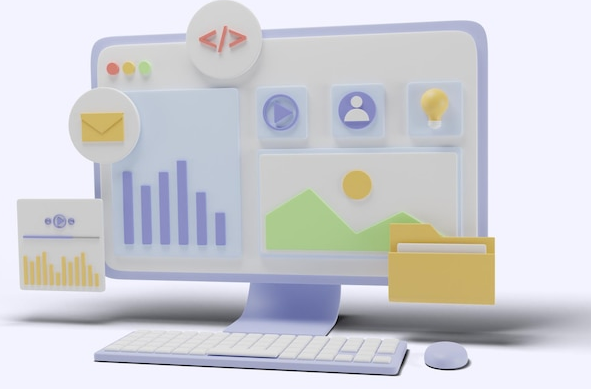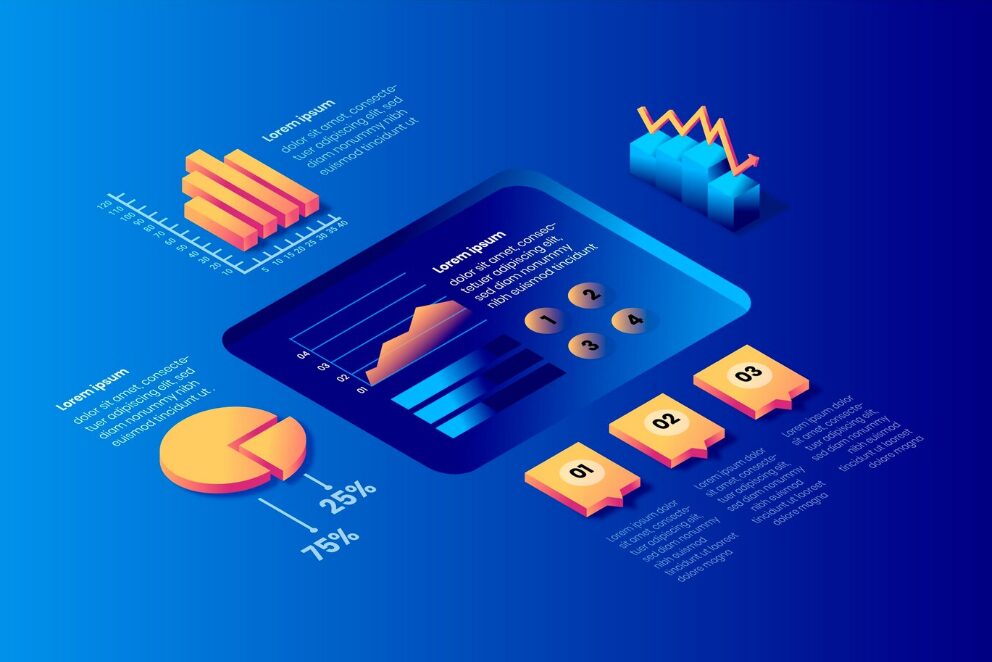Welcome to the world of predictive data analytics – a dynamic field that holds the potential to revolutionize the way businesses operate. By harnessing data insights, organizations can make informed decisions, unlock new opportunities, and gain a competitive edge in an increasingly data-driven world. In this article, we will explore the power of predictive data analytics, delving into its core concepts, methodologies, and strategic benefits. Discover how you can leverage predictive data analytics to forecast trends, improve operational efficiency, and drive innovation within your organization. Let’s dive into the world of predictive data analytics and unleash its full potential.
Table of Contents
Understanding Predictive Data Analytics
If you want to unlock the full potential of predictive data analytics, you must first grasp its core concepts. At its heart, predictive analytics involves using data analysis to make informed decisions. By leveraging predictive models and algorithms, businesses can derive valuable insights that may not be immediately apparent.
Data Analysis Principles
Data analysis is central to predictive data analytics. This process involves collecting and cleansing large amounts of data and then transforming it into a format that can be analyzed using algorithms. Common techniques used in data analysis include regression analysis, clustering, and decision trees. Through these methods, businesses can identify patterns and anomalies in their data, leading to valuable insights.
Predictive Models and Algorithms
Predictive models and algorithms are at the heart of predictive data analytics. These techniques use historical data to identify patterns and relationships, which can then be used to make predictions about future events. Common predictive models include linear regression, decision trees, and neural networks. These powerful tools are critical for driving informed decision-making and enhancing forecasting capabilities.
By understanding these fundamental principles, you can begin to harness the power of predictive data analytics. In the next section, we’ll explore how predictive modeling can unlock even greater insights.
Unlocking the Power of Predictive Modeling

Predictive modeling is a statistical technique used to analyze historical data and make future predictions. At the heart of predictive data analytics, predictive modeling utilizes data patterns to identify insights and forecast future outcomes. Through predictive modeling, organizations can drive strategic decision-making and enhance forecasting capabilities.
There are several methodologies and techniques used in predictive modeling, including regression analysis, decision trees, and neural networks. Regression analysis is used to model and analyze relationships between variables, while decision trees and neural networks are utilized to process large amounts of data and uncover hidden patterns.
When applied correctly, predictive modeling can help organizations improve their forecasting accuracy, identify trends, and anticipate future market dynamics. Closely tied to a data-driven decision-making approach, predictive modeling drives organizations toward informed decisions and improved outcomes.
- Predictive modeling is used to analyze historical data and make future predictions.
- It utilizes statistical techniques like regression analysis, decision trees, and neural networks.
- Predictive modeling enhances forecasting accuracy, identifies trends, and helps anticipate future market dynamics.
- Predictive modeling drives organizations towards data-driven decision-making and improved outcomes.
In summary, predictive modeling is a powerful tool that can bring significant benefits to organizations. With its ability to drive strategic decision-making and enhance forecasting capabilities, predictive modeling is a key component of predictive data analytics. By unlocking the power of predictive modeling, organizations can stay ahead of the competition and succeed in a data-driven world.
Forecasting Trends with Data Insights

In today’s data-driven world, businesses are turning to predictive data analytics to forecast trends and anticipate future market dynamics. By harnessing the power of data insights and predictive analytics, organizations can identify patterns, spot emerging trends, and stay ahead of the competition.
Thanks to advanced algorithms and machine learning capabilities, predictive data analytics can provide accurate data forecasting to help businesses make informed decisions. Data forecasting enables a forward-looking approach, allowing organizations to anticipate trends and adapt to shifting market dynamics.
Gaining a Competitive Edge with Predictive Trends
By leveraging data insights, businesses can gain a competitive edge by identifying future market trends and preparing for them in advance. Predictive analytics models can analyze large volumes of data, identify patterns, and provide insights into future emerging trends. This enables businesses to respond faster to customer needs and gain a significant advantage over their competitors.
Spotting Emerging Trends with Predictive Data Analytics
With predictive data analytics, businesses can identify emerging trends before they become mainstream. By analyzing data and monitoring changes over time, organizations can spot growing trends and predict their potential impact on business operations. This provides companies with the opportunity to take proactive steps and capitalize on emerging trends.
Leveraging Predictive Algorithms

Transforming data into actionable insights requires powerful algorithms. Predictive algorithms, in particular, are essential in uncovering hidden patterns and generating accurate predictions.
When it comes to data analysis, leveraging predictive algorithms can help improve decision-making processes. By detecting trends and anomalies, organizations can gain valuable insights into consumer behavior, business performance, and even future market conditions.
But what are predictive algorithms exactly? Put simply, these are a set of complex mathematical calculations that use historical data to make predictions about future outcomes. By analyzing the relationships between various data points, predictive models can generate accurate forecasts and identify patterns that may be invisible to the human eye.
Not only can predictive algorithms enhance data analysis, but they can also optimize and automate decision-making processes. By automating repetitive tasks and reducing the risk of human error, organizations can save time and resources while improving accuracy.
From predictive analytics in finance and healthcare to sales forecasting and supply chain management, predictive algorithms have become an indispensable tool in numerous industries.
The Strategic Benefits of Predictive Data Analytics
You already know that predictive data analytics can help your business make informed decisions and gain a competitive edge. But did you know that embracing this powerful technology can have a broader impact on your entire organization? Here are just a few strategic benefits of harnessing the power of predictive data analytics:
Enhanced efficiency
Predictive data analytics can help streamline your operations, allowing you to allocate resources more effectively and make better use of your time and budget. By automating tasks and workflows, you can free up your team to focus on higher-level strategic priorities.
Increased innovation
With predictive data analytics, you can identify emerging trends and potential opportunities before they even become apparent to your competitors. This can help you stay on the cutting edge of your industry and differentiate yourself from your rivals.
Improved decision-making
By utilizing predictive data analytics, you can make more informed decisions based on data insights rather than guesswork. This can help you avoid costly mistakes and ensure that you’re always moving in the right direction.
Better customer experience
With predictive data analytics, you can gain a deeper understanding of your customers’ needs and preferences. By tailoring your products, services, and marketing efforts to their preferences, you can provide a more personalized and satisfying experience.
Real-World Examples of Predictive Data Analytics
| Company | Use Case | Result |
|---|---|---|
| Amazon | Predictive recommendations for customers | 35% of Amazon’s sales come from personalized recommendations |
| Netflix | Predictive analytics to create tailored content | 75% of Netflix’s viewers watch recommended titles |
| Walmart | Predictive inventory management | Reduced stock-outs by 30% |
These are just a few examples of how predictive data analytics can drive value for businesses across a wide range of industries. By leveraging data insights and predictive analytics, your organization can gain a strategic advantage and achieve long-term success.
Overcoming Challenges in Predictive Data Analytics
The implementation of predictive data analytics is not without its challenges. However, understanding and overcoming these hurdles is essential for organizations to maximize the benefits of this dynamic field. In this section, we will discuss some common challenges faced by businesses when leveraging predictive data analytics and provide insights on how to overcome them.
Data Quality Issues
The accuracy of data is a fundamental aspect of predictive data analytics. However, ensuring that data input is of high quality can be a significant challenge. Poor quality data can generate inaccurate results, leading to flawed insights and decisions. To overcome this challenge, businesses must implement data governance policies and employ data validation techniques to ensure data quality.
Interpretability Concerns
In predictive data analytics, the complexity of algorithms used can sometimes make understanding predictions and insights a challenging task. The interpretability of data outputs is essential, given how relevant it is to draw accurate conclusions from analysis. To overcome this challenge, businesses should consider utilizing transparent models and visualization tools that generate easily interpretable results.
Shortcomings in Predictive Models
Predictive models are vital to leveraging the power of predictive data analytics. However, even the most advanced models have limitations, and they are susceptible to erroneous predictions. To overcome this challenge, businesses should continuously examine data trends to promptly identify and improve areas where models have shortcomings.
Privacy and Security Risks
Predictive data analytics relies on the use of large data sets, and storing and sharing such information can pose privacy and security challenges for businesses. Organizations must ensure that their data management framework conforms to data protection legislation and that all confidential information is appropriately secured to ensure data loss prevention and guarantee integrity.
By addressing these challenges, businesses will increase their ability to harness the full power of predictive data analytics and, in turn, take advantage of data insights to enhance decision-making processes and drive operational excellence.
Ethical Considerations in Predictive Data Analytics
As organizations continue to embrace predictive data analytics, it is essential to address the potential ethical implications of this technology.
Predictive data analytics relies heavily on data analysis to forecast trends, identify patterns, and make accurate predictions. However, this can sometimes result in unintentional biases that may perpetuate discrimination or harm vulnerable populations.
Organizations must also consider privacy concerns when it comes to collecting and using data for predictive purposes. Individuals have the right to know what data is being collected about them and how it will be used. Transparency and data anonymization practices can help prevent privacy violations.
Furthermore, predictive data analytics can raise ethical dilemmas when it comes to decision-making processes. Organizations must ensure that decisions made with the help of predictive analytics do not violate any legal or moral standards.
By considering these ethical considerations and implementing responsible data practices, organizations can leverage predictive analytics for positive change while minimizing potential harm.
Implementing Predictive Data Analytics in Your Organization
Are you ready to take advantage of predictive data analytics? Implementing predictive data analytics can be a complex process, but it is crucial to follow a set of steps to achieve success. Here are the key steps for your organization to follow:
1. Define Your Objectives
The first step to successfully implement predictive data analytics is defining what your organization aims to achieve. From identifying emerging trends to making informed decisions, clarify what you want to accomplish with predictive data analytics.
2. Build the Right Infrastructure
The process of implementing predictive data analytics involves having the infrastructure to manage your data effectively. Make sure that your organization has the right technologies, tools, and platforms to collect, store, and analyze data.
3. Ensure Data Quality
High-quality data is essential for predictive data analytics to work effectively. Establish data standards and management processes to ensure that the data you are capturing is accurate, free of errors, and can be used for analysis.
4. Foster a Data-Driven Culture
Creating a data-driven culture will help your organization effectively adopt predictive data analytics. Educate your team on the power of data insights, and ensure that your team is equipped with the skills and knowledge to use predictive data analytics to make decisions.
5. Leverage Expertise
Predictive data analytics can be complicated to implement and requires a high level of expertise to derive valuable insights. Consider partnering with outside experts or investing in training your team to build the expertise necessary for predictive data analytics success.
By following these key steps, your organization can successfully implement predictive data analytics and gain a competitive edge in the market.
Conclusion
As you have learned through the various sections, predictive data analytics has the power to shape the future of businesses. By leveraging data insights, your organization can make informed decisions and gain a competitive edge. With an understanding of the core concepts and methodologies, you can unlock the full potential of predictive modeling and forecasting.
While implementing predictive data analytics may come with some challenges, including data quality issues and ethical considerations, these can be overcome with the right approach. By fostering a data-driven culture and implementing the proper infrastructure, you can effectively implement predictive data analytics in your organization.
So what are you waiting for? Embrace the future of predictive data analytics and take your business to the next level.





Permalink